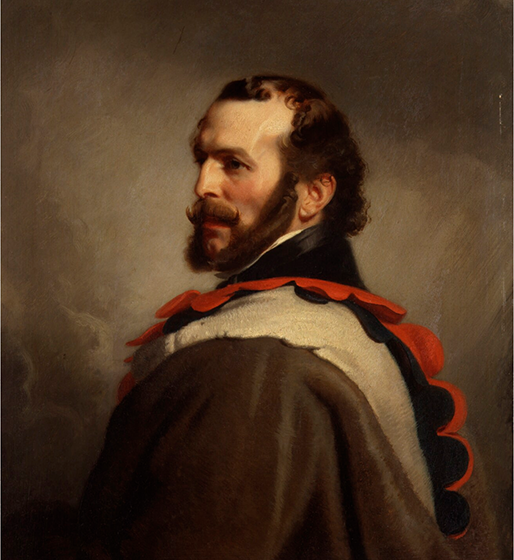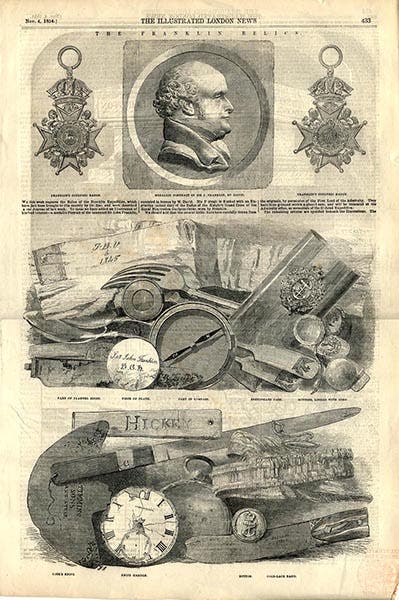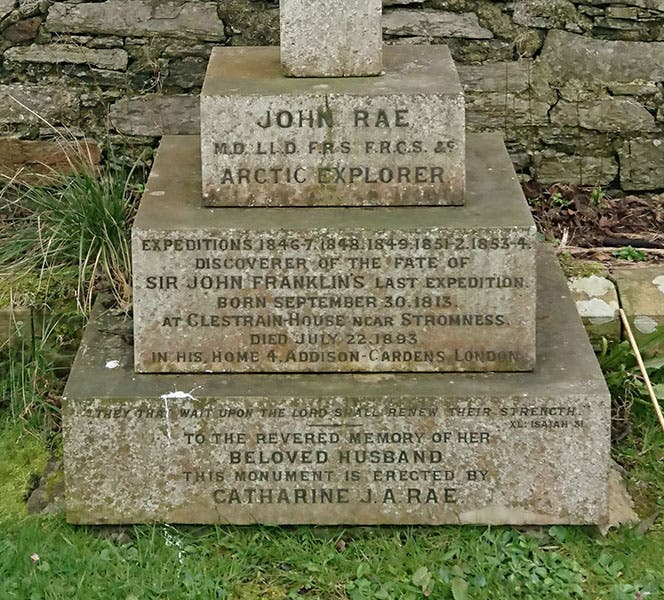Scientist of the Day - John Rae
John Rae, a British explorer of the Arctic, died July 22, 1893, at the age of 79. Rae was an Orcadian, hailing from the Orkney Islands north of Scotland, an indication that he had a strong sense of independence and self-reliance, which he would later demonstrate in the Canadian Arctic. He studied medicine at Edinburgh and found a position as a surgeon with the Hudson's Bay Company (HBC); he was stationed at Moose Factory in Ontario for a decade. He then spent the next decade making solitary trips across what is now northern Canada, sponsored either by the HBC or by the British Admiralty. He was one of the few Arctic explorers who adopted the ways of the Inuit, building snow houses for each overnight stop and living pretty much off the land. Each of his long trips – he made four in all – had the goal of mapping a region of the Canadian Arctic coastline. Peter Dease and Thomas Simpson, also working for the HBC, had explored from the Coppermine River east to King William Island and the Castor and Pollux River in 1838 and 1839. Rae’s mission was to complete a map of the entire northern coastline. And he would do so.
On the last of his four expeditions, in 1854, Rae discovered the fate of the John Franklin expedition, which had been missing for almost 9 years. In the region of Pelly Bay, he encountered Inuit who told of ships frozen in the ice, and of men trekking south. The Inuit also told Rae that they had found a party of thirty or so men, all dead; the natives carried away some silverware, buttons, and other trinkets. which they either gave or sold to Rae. Most disturbingly, they told Rae that some of the bodies were mutilated in a way that suggested cannibalism.
Rae thought this testimony important enough that he cut his expedition short and returned to England. He sent ahead a letter to the Admiralty, detailing the accounts he had from the Inuit, including the suspicion of cannibalism. Unbeknownst to Rae, the Admiralty released the letter to the public. Rae returned home to find himself vilified by the press for suggesting that Englishmen could have engaged in cannibalism, and for believing the tales of mere "savages," as the Inuit were referred to. Lady Jane Franklin, John Franklin’s widow, was especially displeased to have her husband's name associated with cannibalism. Rae bore the brunt of this outrage for years, although the Admiralty was responsible for making his confidential information public.
There was a £10,000 reward offered to the person who discovered the fate of the Franklin expedition. Rae showed the Admiralty the trinkets he had brought back – one of them a silver plate with John Franklin's name on it – and there seemed to be little doubt now what had happened, leaving aside the cannibalism question. After some bureaucratic delays, the reward was given to Rae in 1856. We show above a page from the Nov. 4, 1854, issue of the Illustrated London Times, where engravings of the Franklin relics were first printed.
Rae published accounts with maps of his expeditions in the Journal of the Royal Geographical Society, which we have in the Library. We show here the map of the 1854 expedition (second image, above), as well as a detail (third image, above). In the detail, you can see the label "Dease & Simpson 1838/Rae 1854" at the left. This was the furthest point east reached by Dease and Simpson. Everything in red is coastline that was newly mapped by Rae. At top center, you can see Pelly Bay, which is where Rae encountered the Inuit with Franklin relics. On the complete map, you can see King William Island, at the top left. The Franklin ships sank on the northwest coast of that island, just at the edge of the map, which marked the starting point of the crew’s migration on foot, although the location was not known to Rae at the time.
Rae has long since recovered the reputation that was sullied in the mid-1850s, and he is now regarded as one of the hardiest and most remarkable of the Arctic explorers of that era. There is a portrait by Stephen Pearce in the National Portrait Gallery (first image), and a Matthew Brady photograph, both of which well-capture his rugged individuality. He is buried at St Magnus Cathedral, Kirkwall, Orkney; we see here his gravestone (sixth image, just above). There is a marble statue of a sleeping John Rae inside the cathedral; it does not appeal to me as a memorial, but you can see it here and form your own opinion. And in 2013, on the bicentenary of his birth, a statue was unveiled on the pier of Stromness, Orkney (fifth image, above).
Dr. William B. Ashworth, Jr., Consultant for the History of Science, Linda Hall Library and Associate Professor emeritus, Department of History, University of Missouri-Kansas City. Comments or corrections are welcome; please direct to ashworthw@umkc.edu.








![“Aurora Borealis,” hand-colored wood engraving by Josiah Wood Whymper, [Natural Phenomena], plate 2, 1846 (Linda Hall Library)](https://assets-us-01.kc-usercontent.com:443/9dd25524-761a-000d-d79f-86a5086d4774/0245ffcb-b70c-477c-8792-0a73ebd54eb2/Whymper%2011.jpg?w=210&h=210&auto=format&fit=crop)


